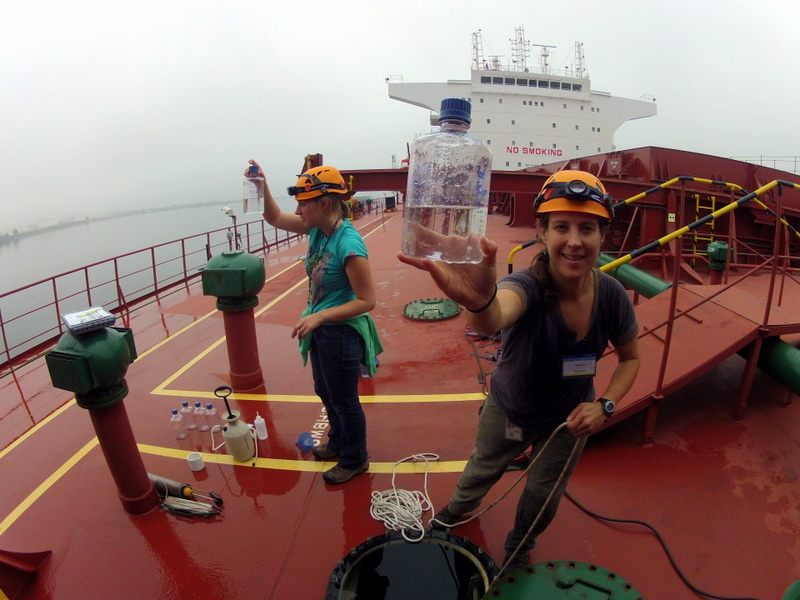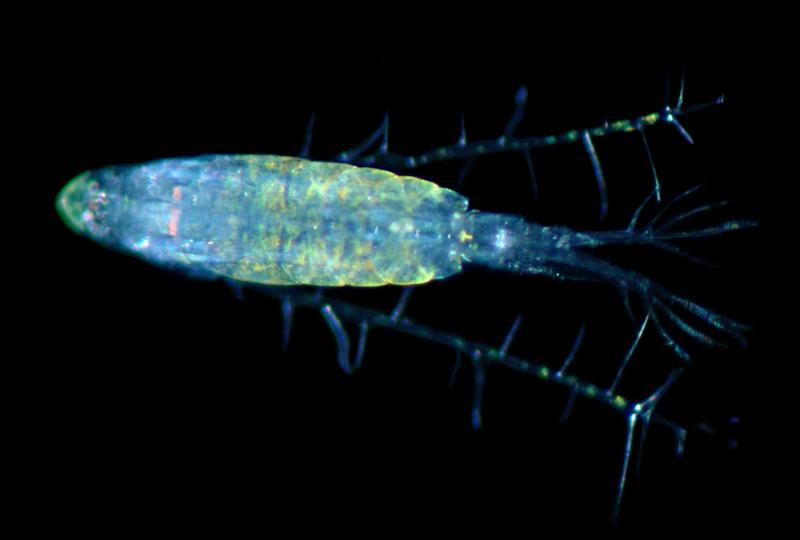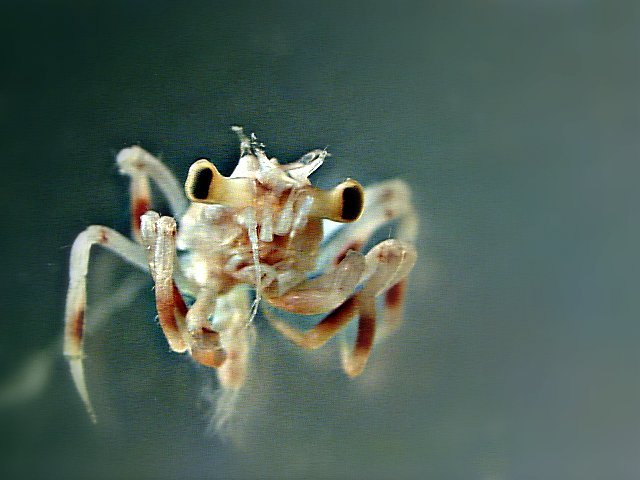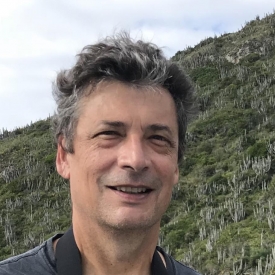Jan 1, 2013
“That’s not possible… It’s clean, clean enough to bathe in… Fresh, the water is very fresh and pure. How? But we exchanged our ballast in the middle of the sea.”
Utterances of disbelief were common by crewmembers when we hauled our nets up through their ballast tanks to reveal scores of live zooplankton — despite their vessel’s use of ballast water exchange (ballast water management). Similar to Hutchinson (1961) who coined the idiom paradox of the plankton, these seamen were initially baffled by the wealth of healthy plankton arising from a seemingly clean, unstructured environment over 200 miles offshore. The results however did not muddle our ballast water biologists who by the legacy of Hutchinson and others expect the open ocean far from land to bustle with a diversity of marine life. But an important distinction is the difference in biology of the open ocean versus nearshore ecosystems.

Each year an average of 91,000 ships arrive to U.S. ports from across the globe on international and domestic trade routes (National Ballast Information Clearinghouse). Ships traveling with empty holds require ballast water to provide stability and steerage during the voyage. Water is pumped into vessel ballast tanks at the port of origin to fulfill this purpose. This ballast is then discharged while the ship loads cargo at the next port of call.
Since the early 1900s it has been observed that shipping is responsible for transporting organisms across the globe. It provides a fast track for organisms that have previously been unable to cross a natural boundary (e.g., ocean) and gives them access to new environments. While these introductions are often harmless, sometimes introduced organisms have hugely detrimental impacts on the existing environment and economy. Within the continental U.S. there are approximately 500 introduced marine and estuarine species of invertebrates and algae that have established populations (National Estuarine and Marine Exotic Species Information System). A recent cost estimate for the control of invasive organisms in the U.S. (both terrestrial and aquatic species) is $138 billion per year (USDA Forest Service 2011). Clearly, it is important that we attempt to prevent these organisms from spreading in the first place!
To minimize the number of viable organisms released, the U.S. Coast Guard requires vessels calling at U.S. ports to manage their ballast water prior to discharge. Current management involves the exchange of ballast water from ports and coastal waters with open ocean water, collected during the voyage. This ballast water management is called open ocean ballast water exchange. Vessels arriving to the U.S. from overseas are required to exchange their ballast water at least 200 nautical miles from any shore, as prescribed by U.S. Coast Guard. This exchange sets up a habitat mismatch whereby coastal organisms are released into an open ocean environment where survival is unlikely, and vice versa.
Since the early 2000s ballast water exchange has been the management method of choice; this summer our team was tasked with helping answer the question: Has the average abundance and diversity of zooplankton in ballast water changed with mandatory ballast water management regulations? In order to address this question, scientists at the Smithsonian Environmental Research Center’s Marine Invasions Research Laboratory returned to one of the things they do best: shipboard ballast water sampling! In the 1990s and early 2000s scientists from our team boarded and sampled over 400 vessels across the U.S., prior to the implementation of the current ballast water exchange regulations. These sampling campaigns generated a large dataset detailing the concentration and diversity of zooplankton present in ballast water before ballast water management methods were used extensively. In 2012 we returned to two of these port systems, Prince William Sound and Chesapeake Bay, to reassess.


As we observed this summer, exchange of ballast water does not lead to an absolute decrease in the number of organisms present in ballast water, and as such it cannot be used to meet the new ballast water discharge standard. However, the reduction in discharged coastal biota likely provides a temporary stopgap that lowers the risk of invasion while researchers and technologists develop ballast water management systems that can inactivate or remove the plankton present in ballast water prior to discharge in a new environment.
While there is still a lot of work to be done to eliminate ballast water as a route for marine invasions (by zooplankton, phytoplankton and microbial species) open ocean exchange is a first step toward reducing the influx of coastal (high risk) species. Research and industry must continue working together to develop more effective ballast water management systems. And hopefully, in the not too distant future, ballast water will indeed be “clean enough to bathe in”…
References
Hutchinson, G. E. (1961) The paradox of the plankton. American Naturalist 95, 137-145.
USDA Forest Service. (2011) US Forest Service Takes Action to Confront the Threat of Invasive Species. Press release no 1150.


